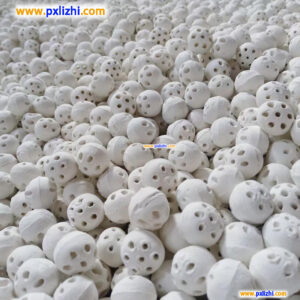Alumina Ceramic Ball Applications and Properties

# Alumina Ceramic Ball Applications and Properties
## Introduction to Alumina Ceramic Balls
Alumina ceramic balls are high-performance ceramic spheres made from aluminum oxide (Al2O3). These balls exhibit exceptional mechanical, thermal, and chemical properties that make them suitable for various industrial applications. With their superior hardness, wear resistance, and thermal stability, alumina ceramic balls have become essential components in many demanding environments.
## Key Properties of Alumina Ceramic Balls
### 1. High Hardness and Wear Resistance
Alumina ceramic balls rank 9 on the Mohs hardness scale, second only to diamond. This exceptional hardness makes them highly resistant to wear and abrasion, even in harsh operating conditions. Their wear resistance is significantly better than traditional steel balls, leading to longer service life in abrasive environments.
### 2. Excellent Thermal Stability
These ceramic balls can withstand extreme temperatures up to 1600°C (2912°F) without losing their structural integrity. Their low thermal expansion coefficient ensures dimensional stability across wide temperature ranges, making them ideal for high-temperature applications.
### 3. Superior Chemical Resistance
Alumina ceramic balls demonstrate remarkable resistance to most acids, alkalis, and organic solvents. They are chemically inert and won’t react with most substances, making them perfect for corrosive environments where metal balls would deteriorate quickly.
### 4. Electrical Insulation Properties
With high electrical resistivity, alumina ceramic balls serve as excellent insulators in electrical applications. This property makes them valuable in electronic components and high-voltage equipment.
### 5. Low Density
Compared to metal balls, alumina ceramic balls have a lower density (typically 3.6-3.9 g/cm³), which reduces centrifugal forces in rotating applications and allows for higher operational speeds.
## Common Applications of Alumina Ceramic Balls
### 1. Grinding Media
One of the primary uses of alumina ceramic balls is as grinding media in ball mills. Their hardness and wear resistance make them ideal for grinding and mixing various materials, including:
– Ceramic powders
– Minerals
– Paints and coatings
– Pharmaceuticals
– Food products
### 2. Bearing Components
Alumina ceramic balls are widely used in precision bearings for applications requiring:
– High-speed operation
– Corrosion resistance
– Non-magnetic properties
– High-temperature stability
These bearings find applications in aerospace, medical equipment, and high-performance machinery.
### 3. Valve Components
In the valve industry, alumina ceramic balls serve as:
– Valve balls in severe service applications
– Check valve components
– Flow control elements in corrosive fluids
Their chemical inertness ensures long-term performance in aggressive media.
### 4. Catalyst Supports
Keyword: alumina ceramic ball
The high surface area and thermal stability of alumina ceramic balls make them excellent supports for catalysts in:
– Petrochemical processing
– Automotive catalytic converters
– Chemical synthesis
### 5. Wear-resistant Components
Alumina ceramic balls are incorporated into various wear-resistant applications, including:
– Pump components
– Mechanical seals
– Liners for abrasive environments
– Shot peening media
## Grades and Specifications
Alumina ceramic balls are available in different purity levels and specifications:
Grade | Al2O3 Content | Density (g/cm³) | Applications
90% | 90% | 3.6 | General purpose applications
95% | 95% | 3.7 | High-wear applications
99% | 99% | 3.9 | Ultra-high purity applications
## Advantages Over Metal Balls
When compared to traditional metal balls, alumina ceramic balls offer several distinct advantages:
– Longer service life in abrasive environments
– Reduced maintenance costs
– Higher operating temperatures
– Better corrosion resistance
– Non-magnetic properties
– Lighter weight for reduced energy consumption
## Conclusion
Alumina ceramic balls represent a high-performance solution for numerous industrial applications where durability, chemical resistance, and thermal stability are paramount. Their unique combination of properties